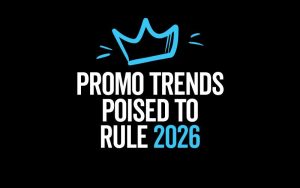Highlights:
- Replace guesswork with attribution by leveraging data-driven insights that show which channels drive ROI.
- Advertising analytics and attribution provide real-time visibility into performance by channel, location, and campaign.
- Using attribution insights, marketers can double down on high-performing channels, test emerging opportunities, and pause underperforming tactics to reduce waste and optimize spend.
Marketing teams are swimming in advertising metrics. Clicks, impressions, conversions, open rates—you name it; there’s a dashboard for it. Yet for all this data at our fingertips, too many marketing budget allocations are still being driven by…vibes. Gut instinct. “That’s how we’ve always done it.” Or worse, the squeakiest franchisee wheel.
It’s like buying a car based on your horoscope instead of checking the Kelley Blue Book value. Sure, it might work out, but odds are you’re wasting serious money. This is where attribution insights—the hard evidence about what’s actually driving results—step in to save the day (and your budget).
When you stop guessing and start measuring, you can finally put your dollars where they’ll work the hardest. Let’s dive in.
Ad Spend Shouldn’t Be Based on Vibes
Let’s be honest: many ad budgets are built on habit, not results. Marketing leaders inherit “legacy” allocation structures that sound more like broken records than modern strategies. “We’ve always spent 40% on radio,” someone insists, even if fewer people are tuning in and more are scrolling TikTok on mute.
In multi-location businesses, the problem multiplies. What gets funded isn’t necessarily what works.
The result? Wasted dollars, underperforming campaigns, and frustrated teams who know there’s a better way. Spoiler alert: There is.
Related: What Multi-Location Marketers Get Wrong About Attribution
Attribution Changes the Budget Conversation
Attribution gives you x-ray vision into what’s really happening with your ad spend. Instead of assuming or arguing, you get real-time advertising analytics into which channels are converting, which are coasting, and which are just…there.
Even better, attribution lets you compare across locations, regions, or campaigns. Maybe your paid social spend in urban markets is knocking it out of the park, but in rural areas, those same dollars are underwhelming. Meanwhile, direct mail—a channel some write off as “old school”—is quietly driving better ROI in those rural territories.
If you’re still clarifying how attribution connects spend to actual sales, explore how to prove ROI with one-to-one attribution.
Armed with these digital marketing metrics, the conversation shifts. It’s no longer about defending tradition. It’s about smarter marketing budget allocation to maximize returns. Attribution doesn’t just tell you what happened; it gives you a roadmap for what to do next.
Using Attribution Insights to Reallocate Budget
Once you have the advertising metrics, here’s how to put it to work:
1. Double Down on Proven Converters
If search ads consistently bring in conversions at a solid cost per acquisition, don’t just call those advertising analytics out—give them more budget.
2. Reinvest in Underserved but High-Opportunity Tactics
If an emerging channel shows promise but hasn’t been fully funded, test reinvesting. Maybe your video content drives high engagement but hasn’t gotten the dollars it deserves.
3. Pause or Test Underperforming Channels
Not every tactic deserves to keep its seat at the table. If display ads are soaking up budget but delivering low ROI, pause them. Or run a smaller test to see if creative tweaks make a difference before pulling the plug completely.
Attribution insights don’t just help you cut waste—they show you where to reinvest so your total spend works harder.
Tips to Build Buy-In Across Franchise Teams
Here’s the catch: reallocating budget across multiple locations and franchisees can get tricky. People get defensive about “their” dollars. The secret is getting everyone on the same page by employing these tactics:
- Present data visually: Dashboards, scorecards, and charts make the story easy to grasp. Digital marketing metrics alone won’t win hearts—visuals will.
- Show impact by location or campaign: Don’t present global advertising metrics. Break it down so each franchisee sees what’s working in their world.
- Frame it as optimizing, not cutting: You’re not slashing their favorite tactic; you’re helping them get more bang for their buck.
- Co-brand dashboards by region or tier: When franchisees see “their” name on a dashboard, it feels personal—and more relevant.
Attribution isn’t about taking power away from local teams. It’s about empowering them with evidence.
Related: Measuring Marketing Performance: Your Guide to Dashboards and Scorecards
Smarter Budgeting Unlocks Smarter Forecasting
Once you stop relying on gut instinct and start budgeting with real digital marketing metrics, you unlock a new level of foresight: data modeling with predictive analytics. Patterns emerge. Outcomes are modeled. Campaigns stop feeling like roulette and start feeling like chess.
With precise predictive modeling, you can zero in on your highest-value prospects, those most likely to convert based on both your customer data and broader consumer trends. This accuracy doesn’t just guide which channels you use, it helps each channel work harder by focusing on the audiences that actually move the needle.
Attribution doesn’t just show you what worked last quarter—it helps you predict what will work next. With accurate advertising metrics, you can forecast customer lifetime value. Armed with this information, you can identify high-performing segments and plan campaigns with confidence.
And here’s the kicker: The right advertising analytics don’t just optimize spend today. They set the foundation for long-term growth.
Spend Smarter
Marketing is too expensive to run on hunches. If you’re basing budgets on instincts, legacy allocations, or the loudest voice in the room, you’re leaving money on the table. With data, your brand moves confidently toward success.
Talk with us today about integrating customer journey attributions into your marketing strategy. Attribution insights help you reallocate dollars to what’s really driving results. When you spend smarter, you don’t just get better campaigns—you build trust with leadership, franchisees, and your own team.
So, let’s trade in the crystal ball for a dashboard. Because dollars and sense go a lot further than dollars and guesses.



